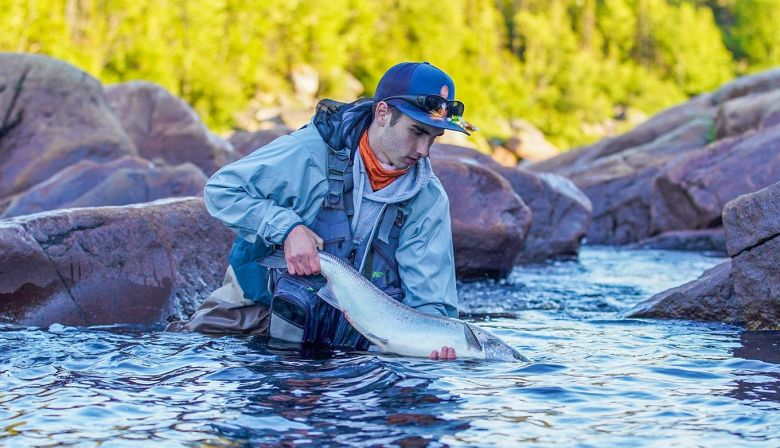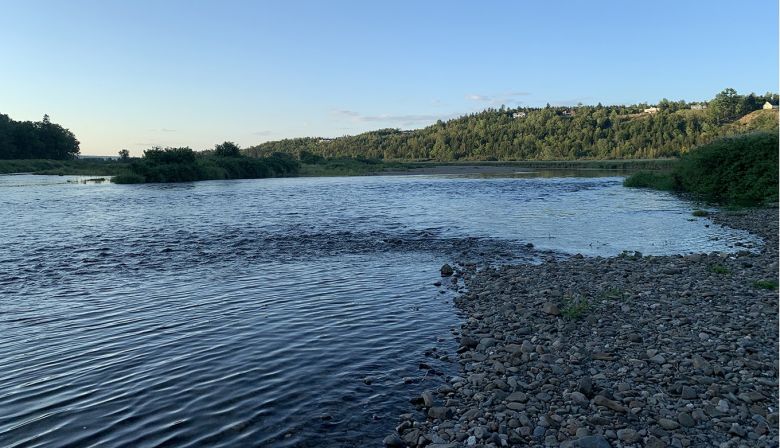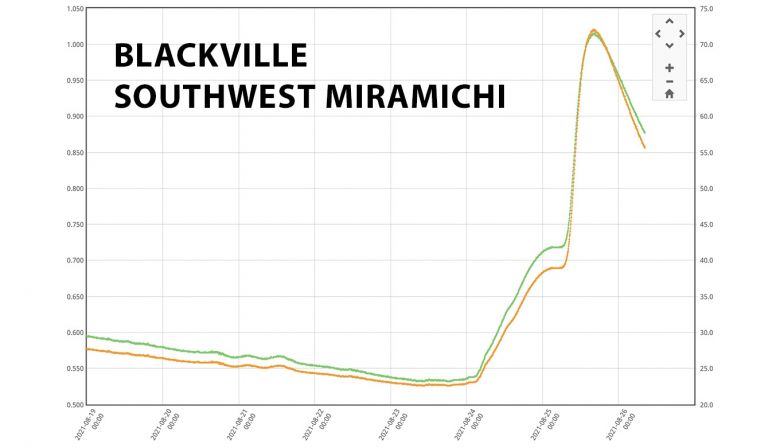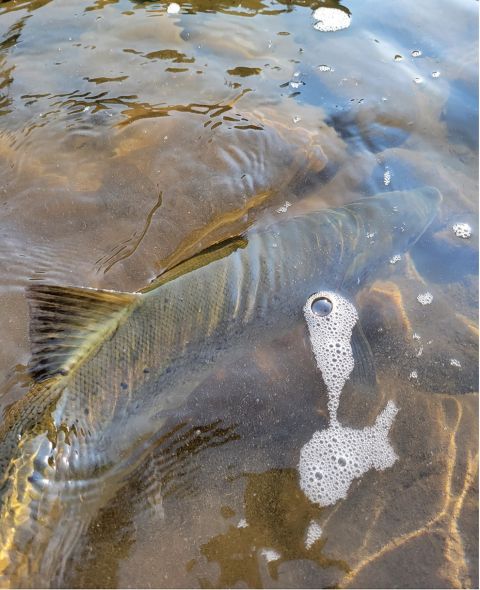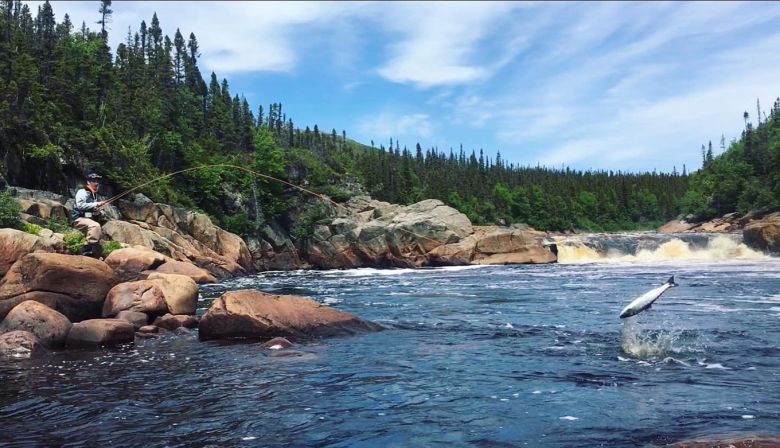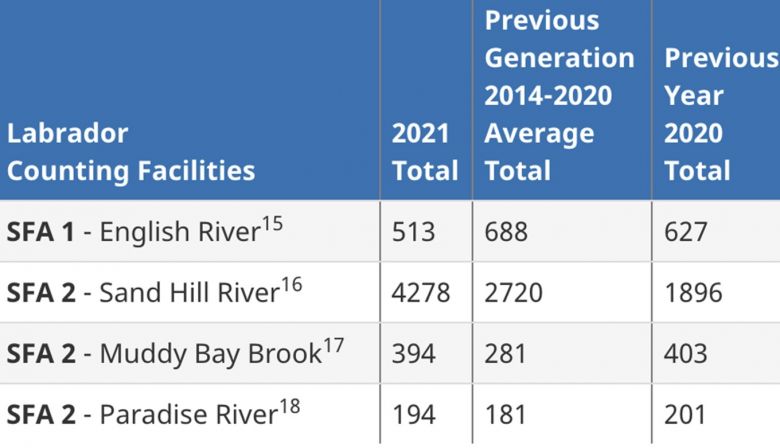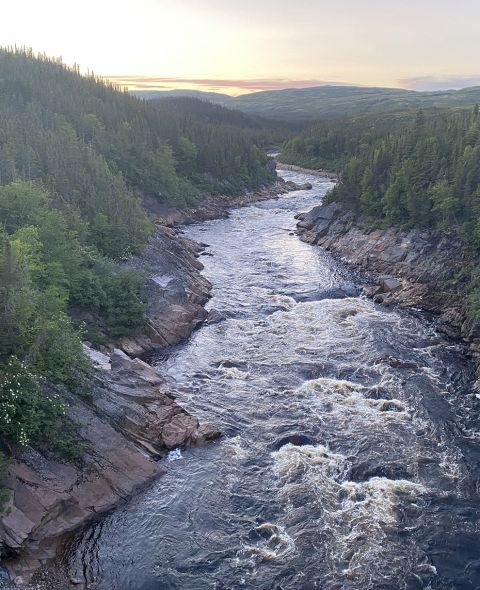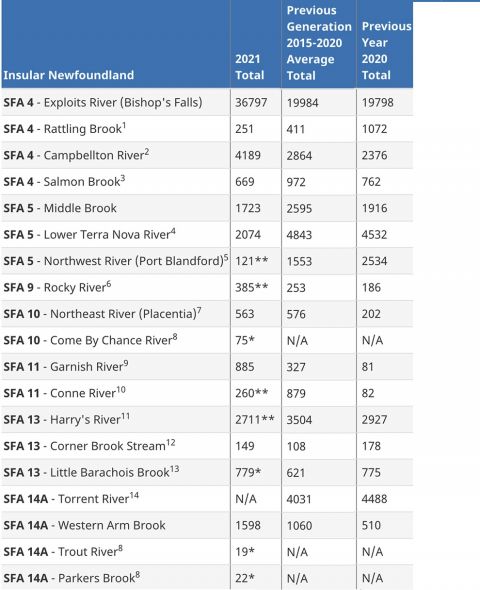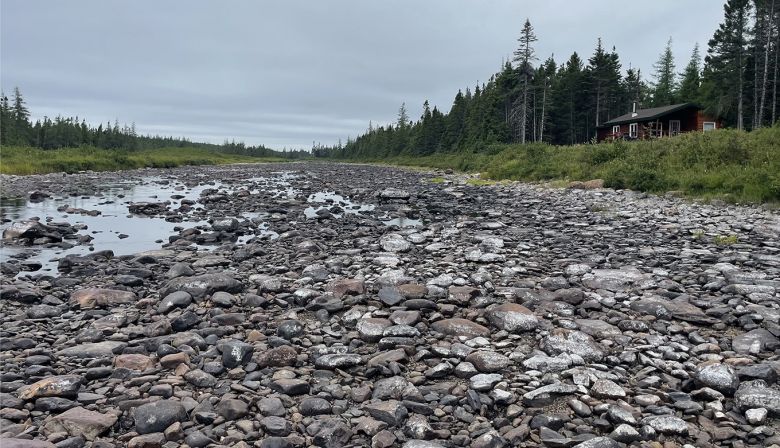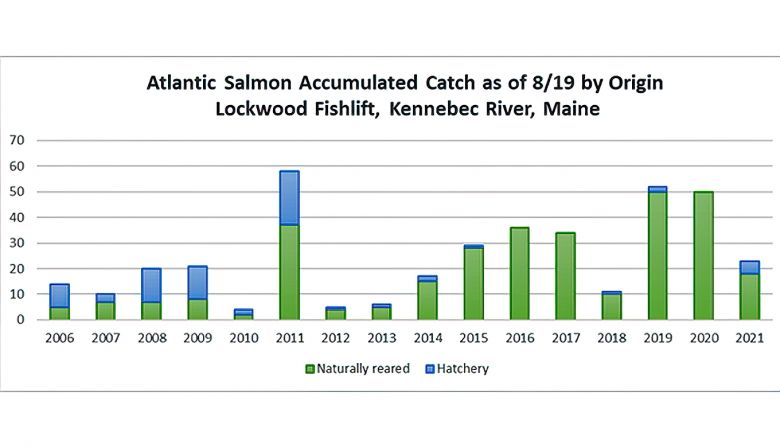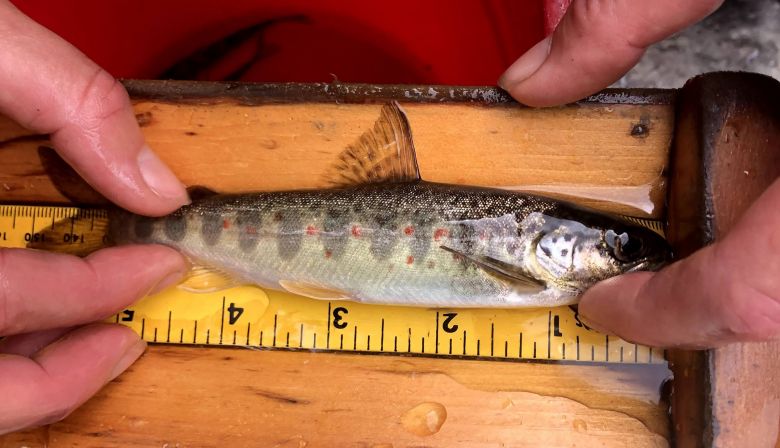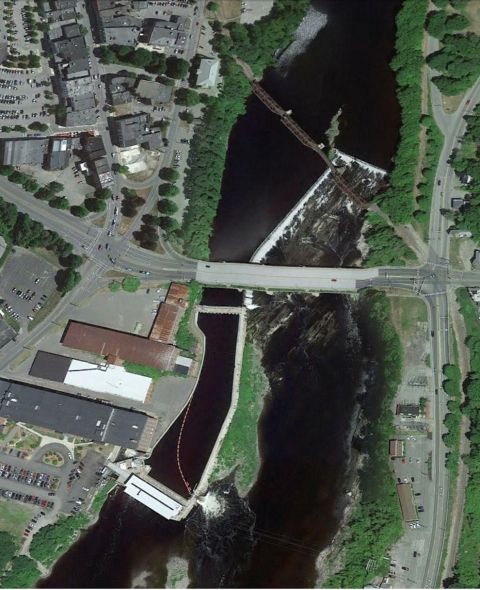Rivière Matapédia
La CGRMP, corporation qui gère les rivières Matapédia, Patapédia et Causapscal déclarent que 583 poissons ont été capturés cumulativement au 23 août, dont 325 relâchés et 258 récoltés.
À la même date en 2020, 973 avaient été capturés sur la Matapédia, dont 577 relâchés et 357 récoltés.
Rivière Mitis
Cette saison, cumulativement au 24 août, 749 saumons et 998 madeleineaux ont été dénombrés pour un total de 1 747 poissons.
En date du 26 août 2020, 1 354 poissons, dont 682 saumons et 669 madeleineaux, avaient été dénombrés par le biais du piège.
Rivière Rimouski
Au 24 août, 687 poissons ont été dénombrés dont 267 saumons et 430 madeleineaux) à pareille date en 2020, 360 poissons avaient été dénombrés par le biais du piège dont 199 saumons et 161 madeleineaux.
De plus, à ce jour en 2021, les pêcheurs sportifs ont capturé 173 poissons, dont 78 saumons relâchés et 95 madeleineaux récoltés.
Cumulativement à la même date en 2020, les pêcheurs avaient relâché 33 saumons et récolté 32 madeleineaux pour un total de 65.
ASF’s
Charles Cusson, Director of Quebec Programs, writes:
Some rain has graced certain regions but not in enough quantities to really improve the flow in our rivers for the long term. Although anglers are having some success on certain rivers, any help from Mother Nature will be received with thanks.
Please keep in mind that higher water temperatures stress salmon even more, so please limit the time you have a fish on the line to ensure it will recuperate properly after being released.
Interesting fact, at the present time river managers have no legal tool at their disposal to close a river to angling due to high water temperatures. A warm water protocol is being reviewed by the government for implementation hopefully sooner than later.
The data used for the Quebec River notes are sourced from various river websites, social media and Quebec government sources. Information can change without prior notification regarding prior year comparative figures.
York, Dartmouth, and Saint-Jean Rivers
Here are the results to August 15th as per the Zec Gaspé website:
York 477 captures (including releases) 4 228 rod-days sold (3,452 in 2020)
Dartmouth 207 captures (including releases) 1 280 rod-days sold (1,005 in 2020)
Saint-Jean 162 captures (including releases) 659 rod-days sold (609 in 2020)
To register a release on one of the Gaspé rivers, please visit
https://saumongaspe.com/riviere-york/declaration-de-remise-a-leau.html
Aux Rochers River
The APRR (Aux Rochers River Protection Association) are sharing statistics to August 23rd.
To date, 177 fish have been landed including 87 salmon and 34 grilse reported released, as well as 56 grilse harvested.
Cumulatively for the season, 588 fish have been counted through the trap (246 salmon and 342 grilse). This compares well to the entire 2020 season when 361 were counted.
Matane River
Considering the Matane’s flow is on the very low end of the scale, it continues to have respectable migration numbers. To August 23rd, 2,165 fish have been counted (890 salmon and 1,275 grilse). As of August 23rd, 2020, 2,397 fish had been counted which included 1,540 large salmon and 857 grilse.
On the angling side as of August 23rd, 690 fish have been landed (158 salmon and 134 grilse released, 45 salmon and 353 grilse harvested). To August 23rd, 2020, 588 fish had been reported to have been landed which included 219 large salmon and 61 grilse released. As well as 75 large salmon and 233 grilse harvested.
Matapedia River
The managers are reporting to August 23rd, for the season, 583 fish have been landed of which 325 fish were released and 258 reported being harvested.
At the same date in 2020, 973 fish had been reported landed consisting of 577 fish declared released and 357 fish harvested.
Mitis River
To August 24th, for this season, 1,747 fish (749 salmon and 998 grilse) have been counted via the fish trap.
On August 26th, 2020, 682 salmon and 669 grilse had been counted cumulatively for a total of 1,354.
Rimouski River
For the season, as of August 24th, 687 fish (267 salmon and 430 grilse) have migrated to the trap. For the same period in 2020, 199 salmon and 161 grilse had been counted for a total of 360.
Anglers have reported landing 173 fish consisting of 78 salmon released and 95 grilse harvested compared to the same date in 2020 when 65 fish had been landed (33 salmon released and 32 grilse harvested).
